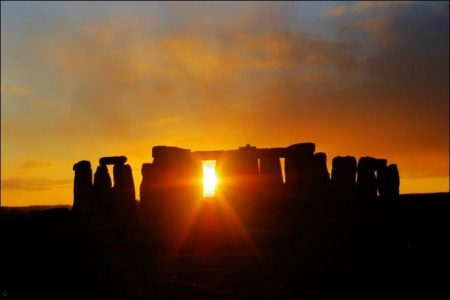Stonehenge is one of the most famous prehistoric monuments in the world. The mysterious circle of upright stones is located about 2 miles (3,2 kilometers) from Amesbury and 8 miles (13 kilometers) from Salisbury in Wiltshire county. It is estimated to be constructed about 2500 BC though some archaeologist believe it was erected few centuries later. However, the others suggest that the monument was erected already in 3000 BC. Since 1986, Stonehenge and the surrounding area is designated as UNESCO World Heritage Site “Stonehenge, Avebury and Associated Sites”.
The exact date of the beginning of Stonehenge construction remains unclear as well as its purpose. Numerous theories have been suggested about the purpose of Stonehenge ranging from religious to paranormal theories. There are also no direct evidence about Stonehenge construction techniques. Some authors claim that stones of such size were impossible to move with Neolithic technology though it has been demonstrated that its constructors could have moved the stones using simple tools and techniques. The theory about Stonehenge as a burial ground seems the most probable explanation because the site as well as its surroundings contain a large number of burials. However, many are convinced that the mysterious circle of stones was used for religious or astronomical purposes because it is perfectly aligned with the summer solstice.
Stonehenge is one of the most visited archaeological sites in the United Kingdom attracting hundreds of thousands of tourists each year. The best way to get to Stonehenge is to drive on your own because it enables you stay at the site as long as you want, while a car park is right next to the stones. If driving on your own is not an option you can reach Stonehenge by a bus from Salisbury or taxi. There is an admission fee to Stonehenge but you receive an audio guide which lasts about 30 to 60 minutes. You are not allowed to walk among the stones except on the summer solstice although some special tours offer the possibility to approach the stones.
If you have time you should also visit the surrounding area containing numerous spectacular Neolithic and Bronze Age monuments. The Stonehenge surrounding area will also delight nature lovers with its diverse range of plants and animals. However, if you truly want to explore the UNESCO World Heritage Site “Stonehenge, Avebury and Associated Sites” you are highly recommended to take at least couple of days for the visit.
Visits: 84



